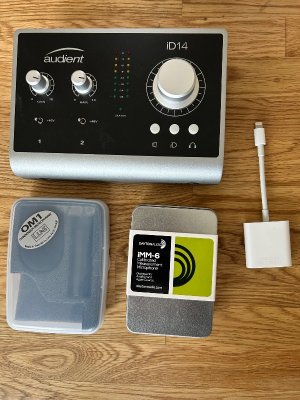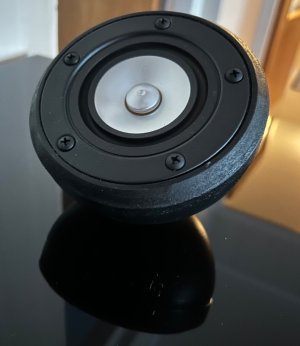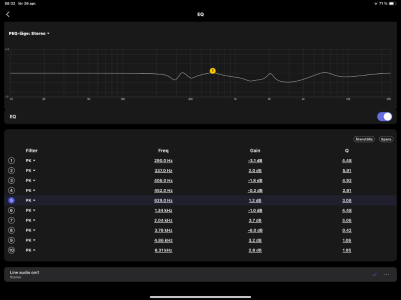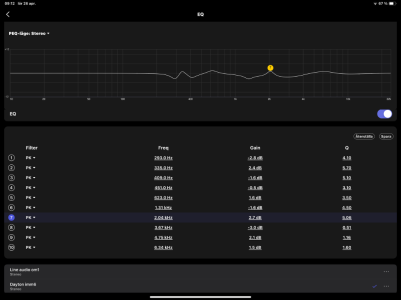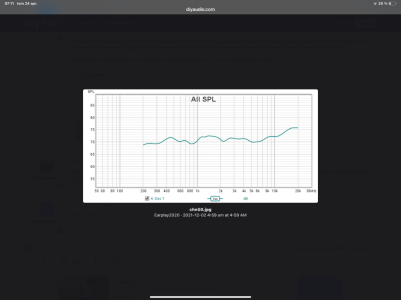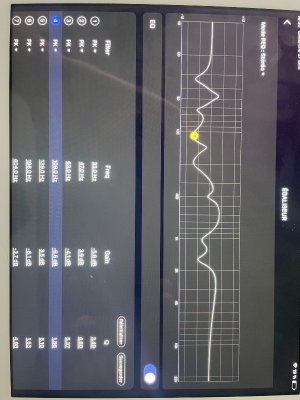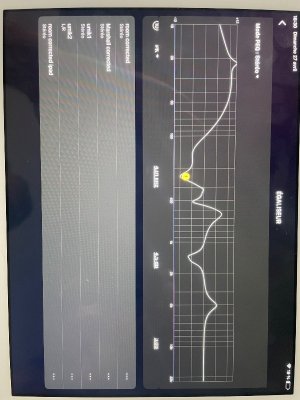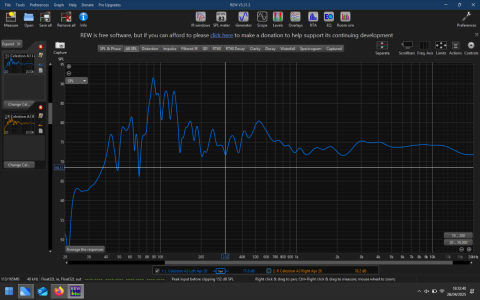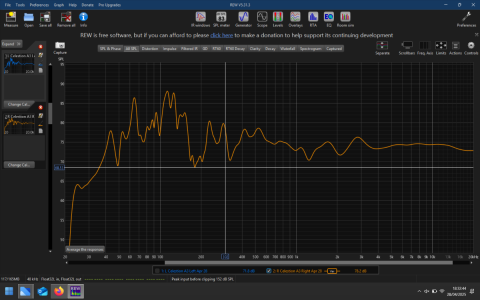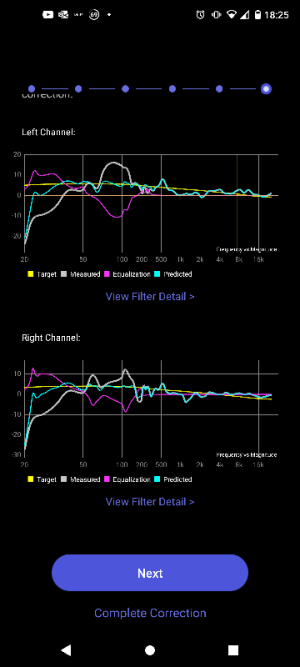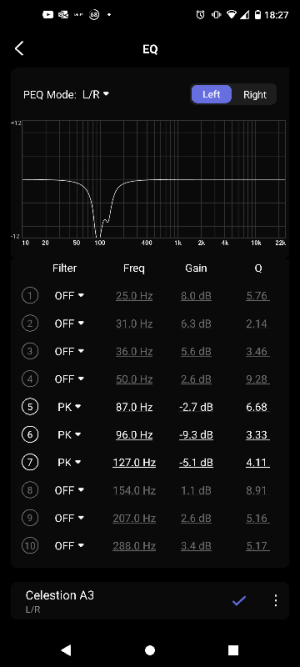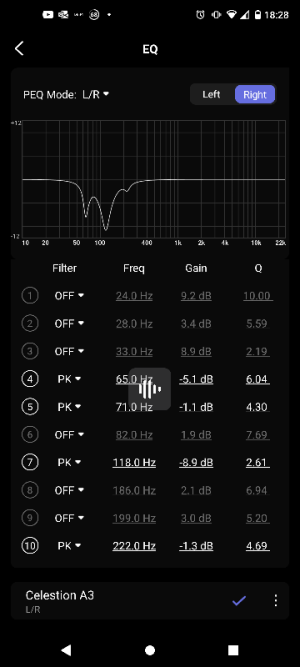I have now tried using the automatic room correction program in Ultra and can state that if you use a really good measuring microphone, in my case a Line audio OM1 together with an Audient id14 interface together with apple's usb - lightning adapter for an ipad, the result is very good , in level with Linn space optimization 2 and in my opinion as good as Dirac.
First, we see that Wiim uses an adjustable frequency correction between 40-4000 Hz as default. If you lower the upper frequency to schroeder, e.g. 40-200 Hz or slightly higher, 40-400 Hz it will give a better sound result. If you have speakers with good directivity, and youre always sitting in the sweet spot, 40-200 Hz is a good start.
WiiM uses B/K sound target as default, which in my opinion gives a better sound result than Harman's curve (also optional).
Using an iPhone mic to do the measurements generate good results, but below 100 Hz you can go in and adjust the peq result manually, boosting a couple of dB makes the results better.
First, we see that Wiim uses an adjustable frequency correction between 40-4000 Hz as default. If you lower the upper frequency to schroeder, e.g. 40-200 Hz or slightly higher, 40-400 Hz it will give a better sound result. If you have speakers with good directivity, and youre always sitting in the sweet spot, 40-200 Hz is a good start.
WiiM uses B/K sound target as default, which in my opinion gives a better sound result than Harman's curve (also optional).
Using an iPhone mic to do the measurements generate good results, but below 100 Hz you can go in and adjust the peq result manually, boosting a couple of dB makes the results better.
Last edited:

